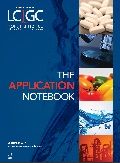Determination of Ephedra Alkaloids and Synephrine in Dietary Supplements via Strong Cation-Exchange SPE and LC–MS/MS Detection
The Application Notebook
Ephedra alkaloids are phenethylamines that occur naturally in plants, including the herb Ma Huang used in traditional Chinese medicine. The aim of this study was to develop a multi-analyte procedure for the extraction, cleanup, and quantification of the ephedra alkaloids in functional foods and natural products. High capacity strong cation-exchange SPE cartridges were used for the isolation of the phenethylamines from dietary supplements. HPLC separation, including separation of the stereoisomers, was carried out using a UCT Selectra® PFPP column prior to detection by LC–MS/MS.

Procedure
1. Sample Pretreatment
Weigh 1 ± 0.1 g of dietary supplement in question into a 15 mL polypropylene centrifuge tube. Add 10 mL of 1% formic acid to each sample. Shake or vortex sample for 15 min to fully extract the ephedra alkaloids*. Ensure samples are fully dissolved. Centrifuge the sample for 10 min at ≥3000 × g and 4 °C.
* For this study, a SPEX® SamplePrep® GenoGrinder® was used to pulverize the tablets.
2. SPE Procedure
a) SPE CONDITIONING
1. Add 2 × 4 mL of methanol to CUBCX1HL56 SPE cartridge.
2. Add 4 mL of ultrapure water.
3. Add 4 mL of 1% formic acid.
Note: Do not let the cartridge go dry otherwise repeat steps 1 through 3.
b) SAMPLE LOADING
1. Load supernatant from sample pretreatment step.
2. Allow sample to percolate through the cartridge or apply a vacuum if necessary (adjust vacuum for flow of 1–3 mL per min).
c) WASH CARTRIDGE
1. Add 2 × 4 mL of 0.1% formic acid and slowly draw through.
2. Add 2 × 4 mL methanol and slowly draw through.
3. Dry under vacuum for ≈30 s to remove excess solvent.
d) ELUTION
1. Elute the ephedra alkaloids using 8 mL of methanol containing 2% ammonium hydroxide.
2. Evaporate off the methanol solvent at 40 °C under a gentle stream of nitrogen until it reaches a volume of ≈1 mL.
3. Add 1 mL of aqueous mobile phase (10 mM ammonium acetate).
4. Evaporate off any remaining methanol.
Instrumental

Results


UCT, LLC
2731 Bartram Rd, Bristol, PA 19007
tel: (800) 385-3153
Website: www.unitecdchem.com


.png&w=3840&q=75)

.png&w=3840&q=75)



.png&w=3840&q=75)



.png&w=3840&q=75)














